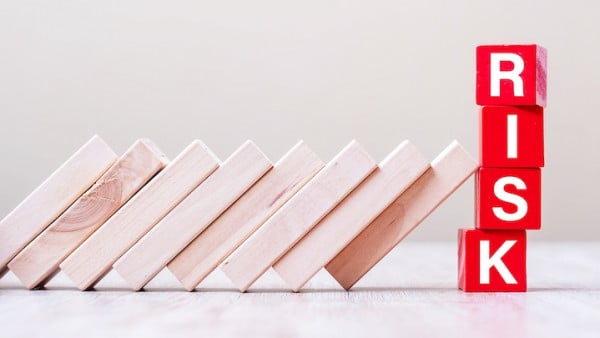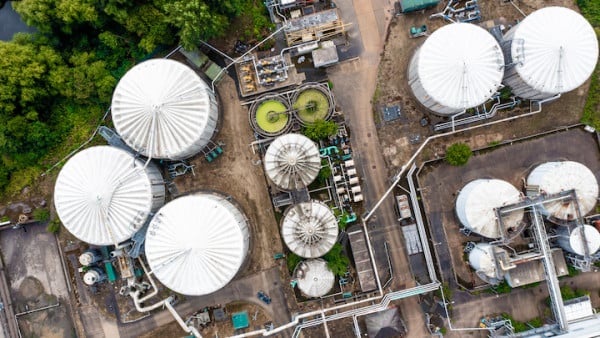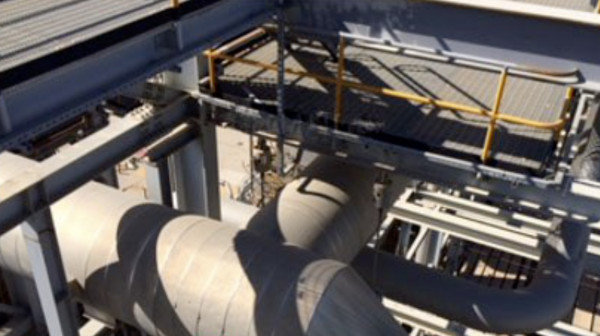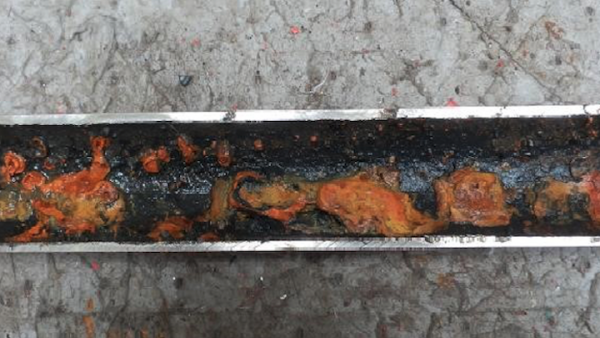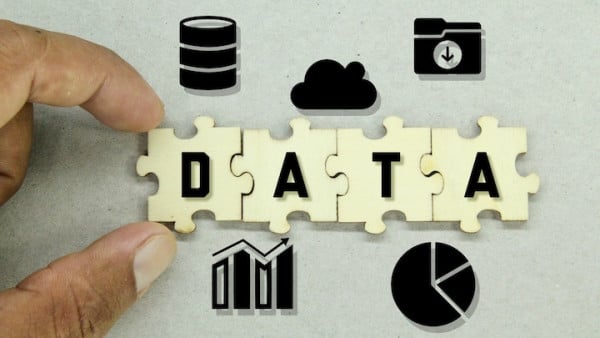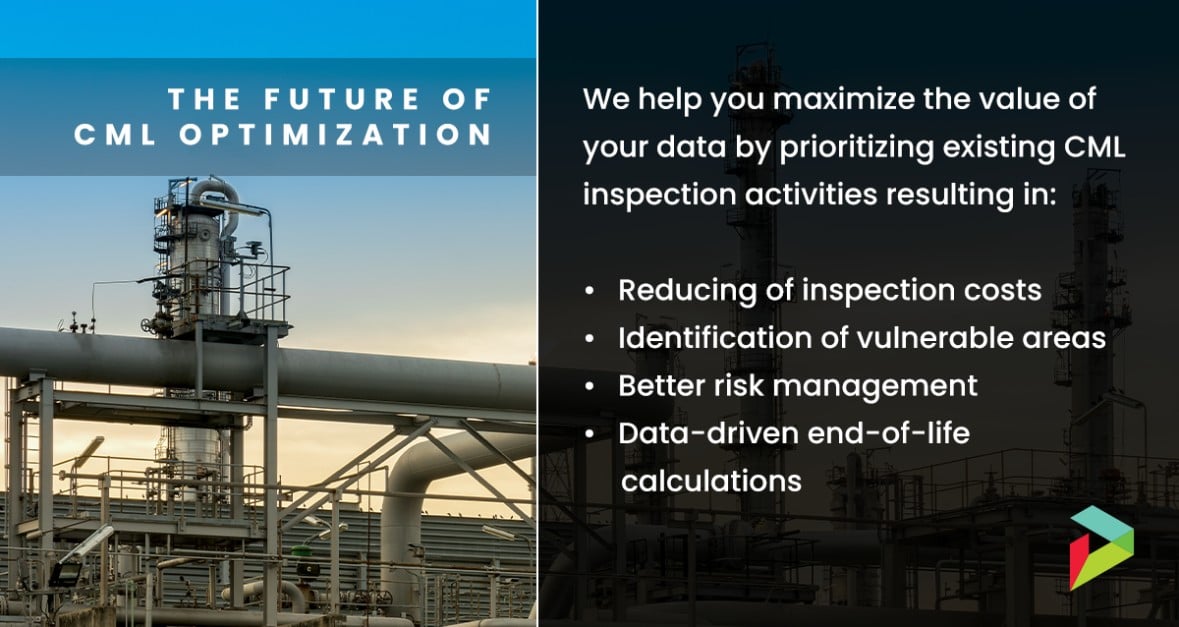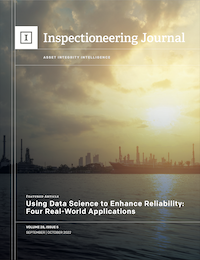
| Date | September/October 2022 |
| Volume | 28 |
| Issue | 5 |
| Return to Journal Index | |
September/October 2022 Inspectioneering Journal Article Index
Utilizing automated ultrasonic testing (AUT) for corrosion mapping to detect and quantify damage can play an important role in an effective MI program. This article compares two common off-the-shelf AUT technologies used for corrosion mapping.
A focus on typical damage morphology and inspection methods used to identify and characterize high-temperature creep including examples of creep damage and in-service failures to offer insight into this complex damage mechanism.
In today's chemical and refining industries, sustained long term reliability of facilities is critical to profitability and competitiveness. In fact, history shows that differences in operating expenses between best-in-class refineries, and poor...
A closer look at the evolution of remaining strength factors (RSF) from its mention in early papers to the latest edition of API 579.
Inadequate consideration of corrosion and material degradation of many older facilities has complicated the implementation of modern-day RBI programs. This article presents a case study of a heat exchanger with such a design.
Texas legislature unanimously passed Senate Bill 900 (SB 900) which goes into effect in September 2023. It mandates that ASTs with a capacity of over 21,000 gallons must protect the ground and surface water. How prepared are you?
An assessment of the vibration behavior observed and recorded on a pre-flash column overhead piping system and the strategic methodologies used based on a proactive troubleshooting technique.
Worldwide, microbial-induced corrosion and biofouling are a challenge to the oil and gas industry. Part 1 of this series reviews simple methods for identifying post-construction MIC damage, biofouling, and mitigation and the microbes that cause it.
While data science has the power to revolutionize the reliability industry, it will only do so with strong guidance from SMEs. This combination enables facilities to develop solutions to challenges based on each method’s unique strengths.




